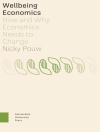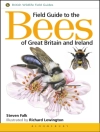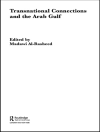′The editors of the new SAGE Handbook of Regression Analysis and Causal Inference have assembled a wide-ranging, high-quality, and timely collection of articles on topics of central importance to quantitative social research, many written by leaders in the field. Everyone engaged in statistical analysis of social-science data will find something of interest in this book.′
– John Fox, Professor, Department of Sociology, Mc Master University
′The authors do a great job in explaining the various statistical methods in a clear and simple way – focussing on fundamental understanding, interpretation of results, and practical application – yet being precise in their exposition.′
– Ben Jann, Executive Director, Institute of Sociology, University of Bern
′Best and Wolf have put together a powerful collection, especially valuable in its separate discussions of uses for both cross-sectional and panel data analysis.′
-Tom Smith, Senior Fellow, NORC, University of Chicago
Edited and written by a team of leading international social scientists, this Handbook provides a comprehensive introduction to multivariate methods. The Handbook focuses on regression analysis of cross-sectional and longitudinal data with an emphasis on causal analysis, thereby covering a large number of different techniques including selection models, complex samples, and regression discontinuities.
Each Part starts with a non-mathematical introduction to the method covered in that section, giving readers a basic knowledge of the method’s logic, scope and unique features. Next, the mathematical and statistical basis of each method is presented along with advanced aspects. Using real-world data from the European Social Survey (ESS) and the Socio-Economic Panel (GSOEP), the book provides a comprehensive discussion of each method’s application, making this an ideal text for Ph D students and researchers embarking on their own data analysis.
قائمة المحتويات
Introduction – Christof Wolf and Henning Best
PART I: ESTIMATION AND INFERENCE
Estimation Techniques: Ordinary least squares and maximum likelihood – Martin Elff
Bayesian Estimation of Regression Models – Susumu Shikano
PART II: REGRESSION ANALYSIS FOR CROSS-SECTIONS
Linear Regression – Christof Wolf and Henning Best
Regression Analysis: Assumptions and Diagnostics – Bart Meuleman, Geert Loosveldt and Viktor Emonds
Non-Linear and Non-Additive Effects in Linear Regression – Henning Lohmann
The Multilevel Regression Model – Joop Hox and Leoniek Wijngaards-de Meij
Logistic Regression – Henning Best and Christof Wolf
Regression Models for Nominal and Ordinal Outcomes – J. Scott Long
Graphical Display of Regression Results – Gerrit Bauer
Regression With Complex Samples – Steven G. Heeringa, Brady T. West and Patricia A. Berglund
PART III: CAUSAL INFERENCE AND ANALYSIS OF LONGITUDINAL DATA
Matching Estimators for Treatment Effects – Markus Gangl
Instrumental Variables Regression – Christopher Muller, Christopher Winship and Stephen L. Morgan
Regression Discontinuity Designs in Social Sciences – David S. Lee and Thomas Lemieux
Fixed-effects Panel Regression – Josef Bruderl and Volker Ludwig
Event History Analysis – Hans-Peter Blossfeld and Gwendoline J. Blossfeld
Time-Series Cross-Section – Jessica Fortin-Rittberger












